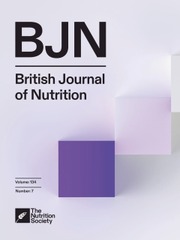No CrossRef data available.
Article contents
Explainable deep learning model WAL-net for individualised assessment of potentially reversible malnutrition in patients with cancer: a multicentre cohort study
Published online by Cambridge University Press: 10 July 2025
Abstract
Persistent malnutrition is associated with poor clinical outcomes in cancer. However, assessing its reversibility can be challenging. The present study aimed to utilise machine learning (ML) to predict reversible malnutrition (RM) in patients with cancer. A multicentre cohort study including hospitalised oncology patients. Malnutrition was diagnosed using an international consensus. RM was defined as a positive diagnosis of malnutrition upon patient admission which turned negative one month later. Time-series data on body weight and skeletal muscle were modelled using a long short-term memory architecture to predict RM. The model was named as WAL-net, and its performance, explainability, clinical relevance and generalisability were evaluated. We investigated 4254 patients with cancer-associated malnutrition (discovery set = 2977, test set = 1277). There were 2783 men and 1471 women (median age = 61 years). RM was identified in 754 (17·7 %) patients. RM/non-RM groups showed distinct patterns of weight and muscle dynamics, and RM was negatively correlated to the progressive stages of cancer cachexia (r = –0·340, P < 0·001). WAL-net was the state-of-the-art model among all ML algorithms evaluated, demonstrating favourable performance to predict RM in the test set (AUC = 0·924, 95 % CI = 0·904, 0·944) and an external validation set (n 798, AUC = 0·909, 95 % CI = 0·876, 0·943). Model-predicted RM using baseline information was associated with lower future risks of underweight, sarcopenia, performance status decline and progression of malnutrition (all P < 0·05). This study presents an explainable deep learning model, the WAL-net, for early identification of RM in patients with cancer. These findings might help the management of cancer-associated malnutrition to optimise patient outcomes in multidisciplinary cancer care.
Information
- Type
- Research Article
- Information
- Copyright
- © The Author(s), 2025. Published by Cambridge University Press on behalf of The Nutrition Society


